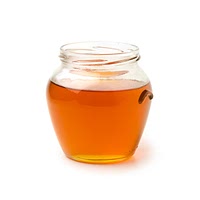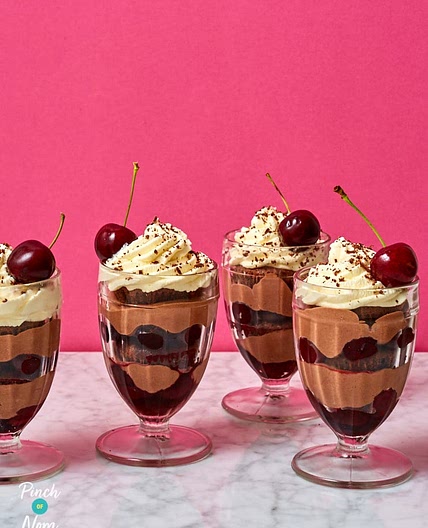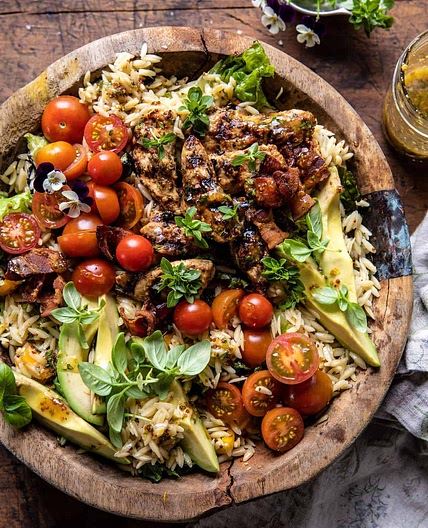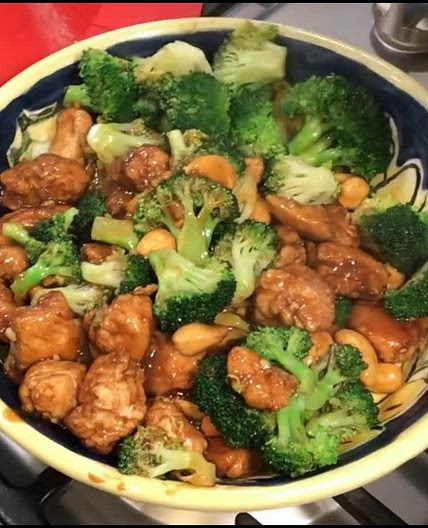Honey
 Pantry
PantryHoney is a sweet, natural substance that’s perfect for sweetening tea, drizzling over toast, and incorporating into baked goods. This pantry staple has been around for thousands of years and was even the world’s primary sweetener up until the 16th century when sugar became more widely available. Honey is a natural sweetener produced by bees, the most well-known producers being honey bees. As bees move from flower to flower, they gather a sugary liquid called nectar and bring it back to their hives. The honey is stored in the hive to help nourish the colony and provide them with warmth in the winter. Fortunately for us, bees consistently produce excess honey for the hive which is then collected by beekeepers and bottled for consumption. The sweetness of honey comes from its high concentration of monosaccharides fructose and glucose. Although all honey is sweet, the flavor, color, and aroma of honey differs depending on which flower nectar the honey originated from. According to the National Honey Board, there are over 300 varieties of honey available in the U.S. alone. Colors vary from light to dark amber with light-colored honey bringing a milder flavor and dark-colored honey boasting a bolder one. Not only is honey a natural sweetener, but it also contains a variety of vitamins, minerals, amino acids, and antioxidants. It also acts as a natural energizer with 17 grams of carbohydrates per tablespoon, fueling the body with the energy it needs from stored carbohydrates. For children over a year old, it may also act as a cough suppressant. Honey may promote the healing of wounds, burns, and other skin conditions due to natural anti-inflammatory properties. However, honey is still sugar, so it’s best to consume it in moderation. It's recommended to store honey in a tightly sealed container away from direct sunlight in a cool location. There’s no need to refrigerate honey and it never goes bad. If the next time you go to reach for your honey jar only to find it’s crystalized, don’t worry! Simply place the jar in warm water and stir until it re-liquifies. Just be sure not to overheat because it could cause the sugar to caramelize.
Honey nutrition and vitamin info per 100g
| Energy | 304.0199890136719 | kcal |
| Total Fat | 0 | g |
| Carbohydrate Total | 82.4000015258789 | g |
| Sugars | 82.12000274658203 | g |
| Protein | 0.30000001192092896 | g |
| Sodium | 4 | mg |
| Fiber | 0.20000000298023224 | g |
10000+ recipes to cook with Honey
Next PageHoney substitutes
- Regular substitute
Honey equivalents and varieties
Honey cooking tips
 Simona _
Simona _Use wooden spoons to scoop honey.
 Samsung Food
Samsung FoodThe most detrimental things you can do to honey are exposing it to heat and allowing moisture inside the container.
 Samsung Food
Samsung FoodIf your honey crystallizes, you can easily make it liquid again. Place the jar in a pan of hot water and stir while heating it gently.
 Samsung Food
Samsung FoodHoney lasts for ever-or nearly forever. An explorer who found a 2000 year old jar of honey in an Egyptian tomb said it tasted delicious!







